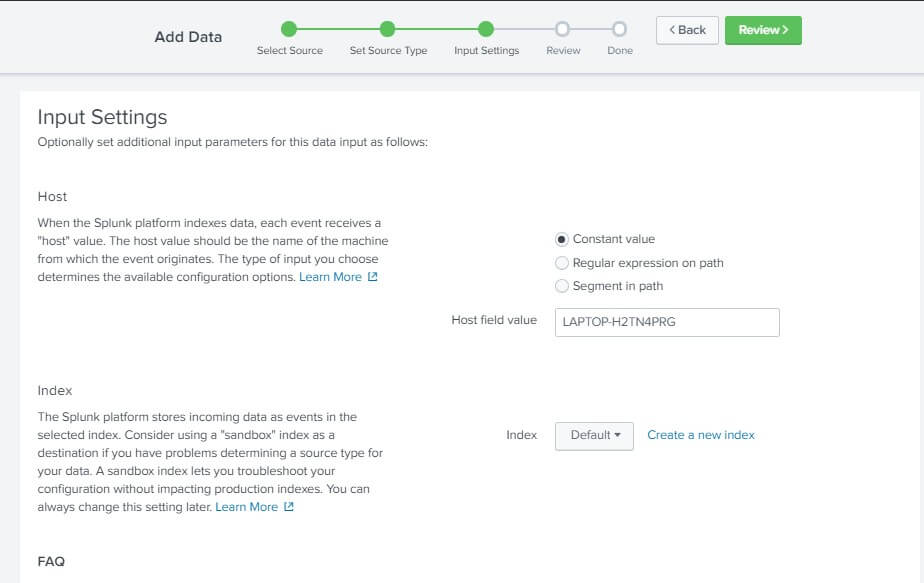

Explore posts in the same categories: Uncategorized This entry was posted on April 9, 2010 at 8:03 pm and is filed under Uncategorized.You can subscribe via RSS 2.0 feed to this post's comments. Matches regex (2) regex: matches regex: In Splunk, regex is an operator. In Azure Monitor, it's a relational operator. Searchmatch In Splunk, searchmatch allows searching for the exact string. Random: rand rand(n) Splunk's function returns a number from zero to 2 31-1. Azure Monitor' returns a number between 0.0 and 1.0, or if a parameter. Splunk regex cheat sheet: These regular expressions are to be used on characters alone, and the possible usage has been explained in the example section on the tabular form below. We will try to be as explanatory as possible to make you understand the usage 410 People Used.
Splunk Regex Cheat Sheet 2019
PCRE (Perl Compatible Regular Expressions) is a C library implementing regex. It was written in 1997 when Perl was the de-facto choice for complex text processing tasks. The syntax for patterns used in PCRE closely resembles Perl. PCRE syntax is being used in many big projects called flavors – .NET, Java, JavaScript, XRegExp, Perl, PCRE, Python, and Ruby, and the programming languages C#, Java, JavaScript, Perl, PHP, Python, Ruby, and VB.NET.
PCRE’s syntax is much more powerful and flexible than either of the POSIX regular expression flavors and than that of many other regular-expression libraries.
we’re focused on PRCE mostly unless stated!
AnchorsStart of string, or start of line in multi-line pattern | Start of string | End of string, or end of line in multi-line pattern | End of string | Word boundary | Not word boundary | Start of word | End of word |
Character ClassesControl character | White space | Not white space | Digit | Not digit | Word | Not word | Hexadecimal digit | Octal digit |
POSIXUpper case letters | Lower case letters | All letters | Digits and letters | Digits | Hexadecimal digits | Punctuation | Space and tab | Blank characters | Control characters | Printed characters | Printed characters and spaces | Digits, letters and underscore |
AssertionsLookahead assertion | Negative lookahead | Lookbehind assertion | Negative lookbehind | Once-only Subexpression | Condition [if then] | Condition [if then else] | Comment |
Groups and RangesAny character except new line (n) | a or b | Group | Passive (non-capturing) group | Range (a or b or c) | Not (a or b or c) | Lower case letter from a to q | Upper case letter from A to Q | Digit from 0 to 7 | Group/subpattern number “x” |
Pattern ModifiersGlobal match | Case-insensitive | Multiple lines | Treat string as single line | Allow comments and whitespace in pattern | Evaluate replacement | Ungreedy pattern |
String Replacementnth non-passive group | “xyz” in /^(abc(xyz))$/ | “xyz” in /^(?:abc)(xyz)$/ | Before matched string | After matched string | Last matched string | Entire matched string |
Hidden chars or shortcutss = [ tnrf]
d = [0-9]
w = [a-zA-Z_0-9]) Small car 2. |
|
Splunk Regex Examples
Quantifiers0 or more | Exactly 3 | 1 or more | 3 or more | 0 or 1 | 3, 4 or 5 |
Escape SequencesEscape following character | Begin literal sequence | End literal sequence |
“Escaping” is a way of treating characters which have a special meaning in regular expressions literally, rather than as special characters. |
PCRE regex quick reference
| [abx-z] | One character of: a, b, or the range x-z |
| [^abx-z] | One character except: a, b, or the range x-z |
| a|b | a or b |
| a? | Zero or one a’s (greedy) |
| a?? | Zero or one a’s (lazy) |
| a* | Zero or more a’s (greedy) |
| a*? | Zero or more a’s (lazy) |
| a+ | One or more a’s (greedy) |
| a+? | One or more a’s (lazy) |
| a{4} | Exactly 4 a’s |
| a{4,8} | Between (inclusive) 4 and 8 a’s |
| a{9,} | 9 or more a’s |
| (?>…) | An atomic group |
| (?=…) | A positive lookahead |
| (?!…) | A negative lookahead |
| (?<=…) | A positive lookbehind |
| (?<!…) | A negative lookbehind |
| (?:…) | A non-capturing group |
| (…) | A capturing group |
| (?P<n>…) | A capturing group named n |

| ^ | Beginning of the string |
| $ | End of the string |
| d | A digit (same as [0-9]) |
| D | A non-digit (same as [^0-9]) |
| w | A word character (same as [_a-zA-Z0-9]) |
| W | A non-word character (same as [^_a-zA-Z0-9]) |
| s | A whitespace character |
| S | A non-whitespace character |
| b | A word boundary |
| B | A non-word boundary |
| n | A newline |
| t | A tab |
| cY | The control character with the hex code Y |
| xYY | The character with the hex code YY |
| uYYYY | The character with the hex code YYYY |
| . | Any character |
| Y | The Y’th captured group |
| (?1) | Recurse into numbered group 1 |
| (?&x) | Recurse into named group x |
| (?P=n) | The captured group named ‘n’ |
| (?#…) | A comment |



